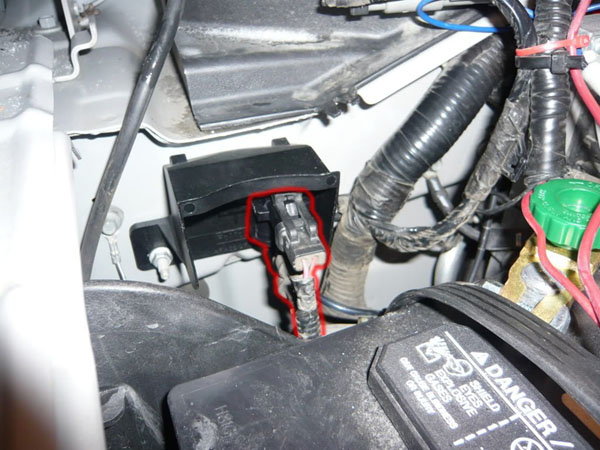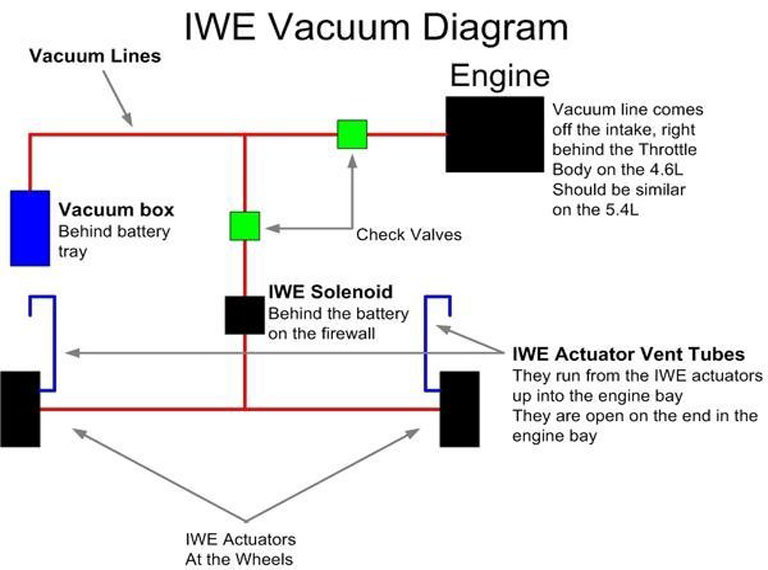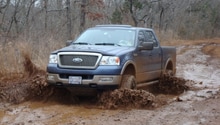Ford F-150/F-250: Why Does the 4WD Dash Light Stay On?
If the 4WD light in your F-150 or F-250 is continuously lit, there's definitely an issue somewhere in the 4WD system. More often than not, there will be other symptoms that'll help pinpoint what the issue is. This guide should help narrow it down further.
This article applies to the Ford F-150 (2004-2014) and the Ford F-250 and Super Duties (2005-2014).
A malfunctioning 4WD system in a Ford F-150 or F-250 will generally trigger several warning signs, including a continuously lit 4WD engagement light. Follow these diagnostic steps to troubleshoot the 4WD system and finally get that warning light to disappear.
Materials Needed
- Flat head screwdriver
- Socket set
- Jacks and jack stands
- Vacuum pump with gauge
Step 1 - Test vacuum system
The vacuum is used to lock and unlock hubs while the truck is running, so any sort of leak can cause a failure to engage or disengage 4WD. If the F-150 or F-250 can successfully switch itself from 4WD to 2WD via the 4WD switch in the cabin, then the vacuum lines are likely not leaking badly if at all. However, if it doesn't work, but turning the 4WD hubs on manually does work, then there might be issues with the vacuum system. The hose is likely either blocked or damaged. Learn how to test the 4WD vacuum system in the related article below.
(Related Article: Everything You Wanted To Know About The IWE System...And Then Some - Ford-Trucks.com)

Pro Tip
The hoses for these on the F-150 are notorious for failing, so be sure to check them if you're experiencing issues. Super Duty trucks have hubs that will lock via the vacuum pressure system and manually, as a backup.
Step 2 - Replace IWE solenoid
A faulty solenoid will prevent the 4WD system from engaging or disengaging. Faulty IWE solenoids are a very common failing point in older F-150s. They don't have a rain shield to prevent water from reaching the IWE circuit and shorting it out. A failing IWE solenoid is the most likely culprit when an F-150 can't shift out of 4WD. When it shorts, the solenoid fails to release the 4WD actuators. If this is the case, replace the solenoid.

Step 3 - Look for vacuum leaks
If pressure drops below 5 pounds, the actuators will not lock or unlock. Check the individual lines in the IWE system for leaks with a hand held vacuum pump and tester.
- Unplug the vacuum hoses from the actuators, one wheel at a time. Attach the vacuum pump to the hose fitting on the actuator and pump up the pump. Replace the actuator if the pump does not hold the vacuum.
- Check the lines from the solenoid to the actuators. Pull the line from the IWE solenoid while it is still connected to the actuator at the wheels. Connect the pump to the line end from the solenoid and check vacuum. Look for cracks or breaks. Replace any lines that won't hold vacuum or have visible cracks or breaks.
- Check the vacuum lines mounted behind the battery on the battery tray, the vacuum box, and the two small check valves coming off the intake. Check each line with the pump to make sure they hold pressure. Replace any lines that do not hold pressure or have visible cracks or breaks.
- If there are no issues with any of these lines, check the vacuum coming straight from the engine, connecting straight to the vacuum pump. If it is below 17, you may have a leak somewhere else in the engine.
(Related Article - How to Replace 4WD Actuators - Ford-Trucks.com)

Figure 3. Handheld vacuum pump. Connect this to the IWE system's vacuum lines to test. 
Figure 4. IWE vacuum diagram. 
Figure 5. F-150 vacuum diagram.
Related Discussions
- IWE System Bible - Ford-Trucks.com
- FX4 4x4 Light Stays On - Ford-Trucks.com
- 4x4 Light On, No Engagement - Ford-Trucks.com






